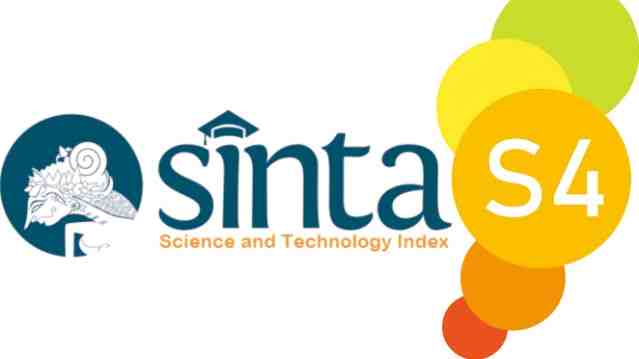ETNOZOOLOGI: STUDI KEARIFAN LOKAL MASYARAKAT ADAT KAMPUNG NAGA TASIKMALAYA
https://doi.org/10.25273/florea.v8i2.9504
Keywords:
Kampung Naga, Ethnozoology, Animals, Rice Pests, Raising of AnimalsAbstract
Ethnozoological study is a study that examines the relationship between humans and animals in traditional studies. People's knowledge in relation to these animals has been passed down from generation to generation to become local wisdom. This ethnozoology includes the matter of raising animals, managing animals for medicine, food and customary and ritual activities, as well as the reciprocal relationship between humans and surrounding animals. The people of Kampung Naga are indigenous people located in Tasikmalaya who still adhere to the local wisdom they have today. Due to the absence of a study on ethnozoological studies in the Kampung Naga community, research was carried out on animal maintenance and control of rice pests which were included in the study of ethnozoological studies. The data collection techniques in this study were interview techniques and documentation with qualitative research methods. The results of the study found that the people of Kampung Naga have local wisdom regarding the control of agricultural pests, the main pests are brown planthopper, walang sangit, rats and birds as well as animal maintenance including chickens, goats, fish, guinea pigs and rabbits. This study aims to describe the study of ethnozoological studies of the people of Kampung Naga, Neglasari Village, Salawu District, Tasikmalaya Regency as a source of learning biology in the form of a booklet.
ETNOZOOLOGI: STUDI KEARIFAN LOKAL MASYARAKAT ADAT KAMPUNG NAGA TASIKMALAYA
Downloads
References
Hermawan, I. (2014). Bangunan Tradisional Kampung Naga : Bentuk Kearifan. Sosio Didaktika. https://doi.org/10.15408/sd.v1i2.1256
Iskandar, J. (2018). Etnobiologi,Etnoekologi Dan Pembangunan Berkelanjutan. Yogyakarta. Plantaxia
Khairunnisa, M. (2014). Kosmologi Ruang Adat Sebagai Identitas Pemukiman Kampung Naga, Tasikmalaya - Jawa Barat. Teknik, 35(1), 49–55. https://doi.org/10.14710/teknik.v35i1.7040
Nurrohman, M., Suryanto, A., & Puji, K. (2014). Penggunaan Fermentasi Ekstra Paitan (Tithonia diversifolia L.) dan Kotoran Kelinci Cair Sebagai Sumber Hara pada Budidaya Sawi (Brassica juncea L.) Secara Rakit Apung. Produksi Tanaman, 2(8), 650. Retrieved from http://protan.studentjournal.ub.ac.id
Permana, S. (2015).Kampung Naga : Pengetahuan Ekologi Tradisional dan Pelestarian Keanekaragaman Hayati Tumbuhan.Yogyakarta. Plantaxia
Sidik Permana, Johan Iskandar, P. (2018). local knowledge on rice variations (landraces) of the Naga Comuniti, West Java, Indonesia. Asian Journal of Ethnobiology, 1(1), 224–234. https://doi.org/10.13057/asianjethnobiol/y010101
Sufia, R., Sumarmi, & Amirudin, A. (2016). Kearifan Lokal Dalam Melestarikan Lingkungan Hidup (Studi Kasus Masyarakat Adat Desa Kemiren Kecamatan Glagah Kabu. Jurnal Pendidikan: Teori, Penelitian, Dan Pengembangan, 1(4), 726–731. Retrieved from http://journal.um.ac.id/index.php/jptpp/article/view/6234
Sumarlina, E. S. N., Darsa, U. A., & Permana, R. S. M. (2019). Pemuliaan Pangan Berbasis Naskah Mantra Pertanian Dalam Kaitannya Dengan Tradisi Masyarakat Kampung Naga Dan Baduy. Jumantara: Jurnal Manuskrip Nusantara, 9(2), 69. https://doi.org/10.37014/jumantara.v9i2.244
Trivana, L., Yudha Pradhana, A., & Pahala Manambangtua, A. (2017). Optimalisasi Waktu Pengomposan Pupuk Kandang Dari Kotoran Kambing Dan Debu Sabut Kelapa Dengan Bioaktivator Em4. Jurnal Sains &Teknologi Lingkungan, 9(1), 16–24. https://doi.org/10.20885/jstl.vol9.iss1.art2
Unayah, N., & Sabarisman, M. (2016).Idenstitas Kearifan Lokal Dalam Pemberdayakan Komunitas Adat Terpencil.Sosio Informa, 2(1).
Wiradimadja, A. (2018). Nilai-Nilai Karakter Sunda Wiwitan Kampung Naga sebagai Bahan Pembelajaran Ilmu Pengetahuan Sosial. Jurnal Pendidikan Sejarah Indonesia, 1(1), 103–116. https://doi.org/10.17977/um033v1i12018103
Downloads
Published
Issue
Section
License
Copyright (c) 2021 Florea : Jurnal Biologi dan Pembelajarannya

This work is licensed under a Creative Commons Attribution-ShareAlike 4.0 International License.
Every accepted manuscript should be accompanied by "Copyright Transfer Agreement" prior to the article publication.
Florea : Jurnal Biologi dan Pembelajarannya by http://e-journal.unipma.ac.id/index.php/JF is licensed under a Creative Commons Attribution-ShareAlike 4.0 International License.
Author who publish with this journal agree to the following terms:
- Author not hold and retain copyright and grant the journal of first publication with the work simultaneously licenced under Creative Commons Atribution Licence that allows others to share the work with an acknowledgment of the work's authorship and initial publication in this journal.
- Authors are able to enter into separate, additional contractual arrangements for the non-exclusive distribution of the journal's published version of the work with an acknowledgment of its initial publication in this journal.
- Authors are permitted and encouraged to post their work online prior to and during the submission process, as it can lead to productive exchanges, as well as earlier and greater citation of published work.










